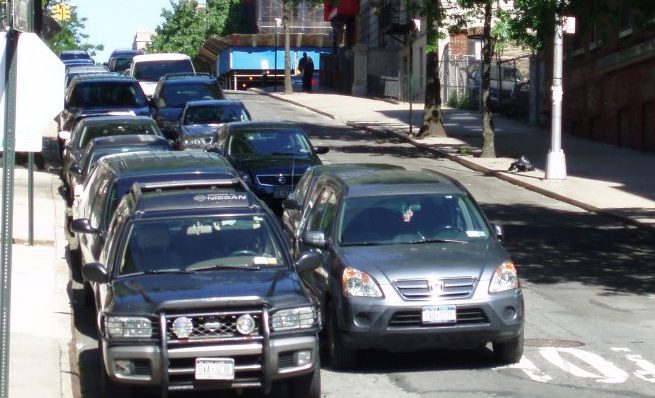Double Parking: A Preventable Menace
Far too often, people double park! Most likely, they couldn’t find a suitable parking space, or only one person needed to get out of the car for a quick shop run. Whatever the reason may be, double parking is a menace and is rightly punishable by law. But, several citizens do it as it’s a tempting option, especially if you’re in a rush.
So, is there a way to put an end to double-parking? Are the laws strict enough to protect legal parkers from this phenomenon? Before answering these burning questions, let’s quickly establish what exactly double parking is.

What is Double parking?
When a driver parks their car next to another correctly parked car on or off the street, it’s called double parking. Think of it as a car parked parallel to your vehicle. Not only does this make it impossible for you to pull out your car, but it also fosters traffic congestion.
Sometimes, you’ll find one person sitting inside the double-parked car to move it in case the other car needs to pull out. But, more often than not, the double-parked vehicles are sitting ducks without a driver.
The former case where the driver is sitting inside a double-parked vehicle usually leaves it running. This has severe effects on the climate as fumes from the exhaust pipe are constantly escaping into the environment.
Can we prevent Double Parking?
Relevant authorities can take specific measures to counter double parking, but they alone cannot stop it from happening. Unless drivers cultivate a civic sense, double parking is here to stay.
Here are a few initiatives already underway to counter this menace:
1. Towing and booting
Making the law without strictly enforcing it is work half done. Therefore, city authorities must not only write the penalty of double parking on signboards of busy streets. They must be proactive with booting or towing the double-parked vehicles altogether. Also, the fines to de-boot or collect a car from the impound should be hefty.
2. Time-bound parking
Often people who find a suitable place to park get done with their work within 30 minutes or 1 hour. But, they don’t come back to pick up their vehicle. Since they’ve found a great spot, you’ll find them doing additional activities while letting their vehicle stay parked on the street.
While this is alright in non-commercial areas, the busy streets start getting choked with double parkers as time passes. To avoid this, traffic authorities must enforce time-bound parking.
For example, a busy street with banks should have 30-minute parking spots. After which, you have to move your vehicle and park it in an alternative bay. This will keep vehicles on the move and continue creating parking vacancies for drivers that would’ve otherwise double parked.
3. Smart parking systems
Smart parking is already in use at lots with automated boom barriers and integrated payment systems. But, in the near future, smart parking technologies will leverage IoT to inform drivers on the move about vacant parking bays around their place of work in real-time. This will make it easy to find an empty parking spot rather than circling or parking next to another vehicle.
Also Read: How Self-Driving Cars Deal with Double Parking
The bottom line
Increasing the number of parking lots to accommodate more and more cars is not a long-term sustainable solution to solve the problem of double parking. Optimizing the usage of pre-existent parking lots is!
As long as authorities enforce fines or penalties and leverage technology to boost the parking experience of drivers, they are strong in their fight against double parking.
